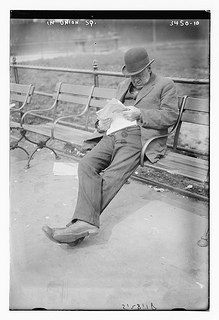
Lucy Morgan has the right idea: shoot video and talk to your editor at the same time. (Flickr Creative Commons: State Library and Archives of Florida)
How’s this sound? The Chicago Sun-Times wants its journalists to work 10 hours a day before they can qualify for overtime pay, according to Jim Romenesko. They’re also calling for the “creation of a new, lower-paid classification of reporters, photographers, designers and copy editors” to work for as low as $13.50 per hour in an intern capacity, with the hopes of being hired as (ostensibly) part of the higher-paid classification. We know the newspapers are trying to gauge the best way to handle this crisis of technology. The European newspapers are starting to feel the plague too. The notion of “overtime” does seem to change in online journalism, where the cycle doesn’t abate.










